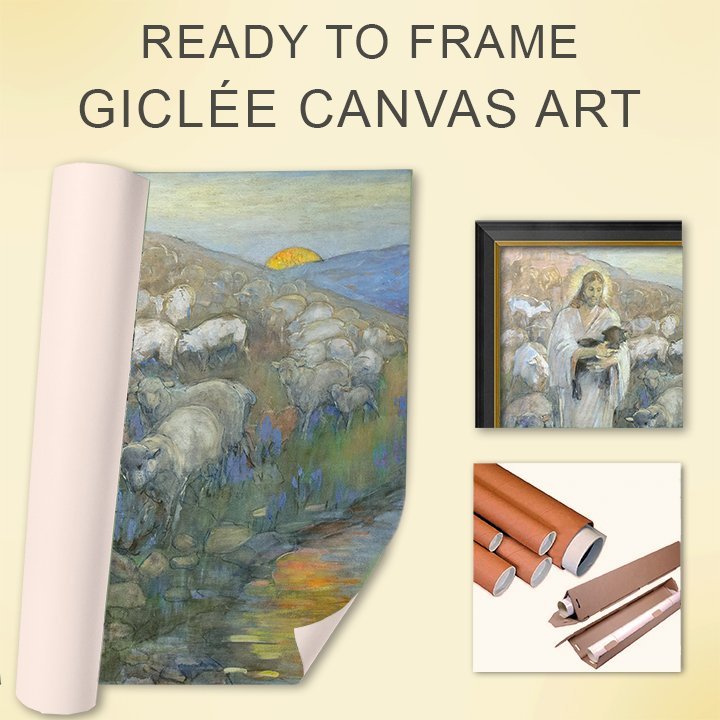Betty and the Gulls by Minerva Teichert (c. 1935)
Betty and the Gulls tells the miraculous story from 1848 when the pioneers in the early Deseret Territory faced starvation and ruin. After planting and nurturing their crops all season, clouds of crickets swarmed upon them and threatened to devour their entire crop. Although the Salt Lake Valley is almost 1000 miles away from the ocean, miraculously, thousands of seagulls appeared, devoured the crickets, and saved the early Mormon settlers from sure disaster.
More About Miracle of the Gulls
Betty and the Gulls is a second piece by Minerva Teichert to celebrate the miracle of the seagulls coming to eat the crickets and save the first crops of the Salt Lake valley. She loved the story of the how the seagulls swooped in after much prayer and saved the crops of the early Salt Lake pioneers. Minerva not only recounted the story often, but she learned of the details of the entire event directly from her grandmother Minerva Wade Hickman, who was present at the miracle.
During May and June of 1848, the worn-out and malnourished Mormon pioneers discovered that crickets had become their enemy. The starving Latter-day Saints watched in horror as these bugs were chewing the young, green leaves of such crops as corn, beans, wheat, flax, and potatoes. It was a matter of survival for the pioneers. Saving the crops from the "ceaseless gnawing of the ruthless and insatiable invader" as described by historian B.H. Roberts, became a matter of fervent prayer. In what has been described as a miracle, the answer to their prayers came when thousands of sea gulls from nearby Great Salt Lake flew in and began feeding on the crickets. This event, known as "the Miracle of the Gulls," brought new hope to the struggling pioneers. (Comprehensive History of the Church 3:331-333.)
More About Minerva Teichert
Minerva Teichert was an artist whose works ranged from western American subjects to many religious paintings primarily depicting the history of the Latter-day Saint movement. This includes Minerva’s several works requested by the Church that were used to illustrate the stories using Book of Mormon art. She is also well known for the many murals she painted in public and private buildings scattered throughout Wyoming, Idaho and Utah. She was born Minerva Kohlhepp in 1888 in North Ogden, Utah. Minerva was the second of ten children and spent most of the first half of her life doing just as much farm work as she did painting. She studied under famous artists like Robert Henri at the Art Institute of Chicago and Art Students League of New York. When she was 29 years old, Minerva Kohlhepp married Herman Teichert on September 15, 1917. However, only one year after their wedding, World War One broke out and Herman left for battle. Although Minerva traveled with Herman throughout his boot camp training and transfers, she was eventually forced to bid farewell and stayed at home with their newborn baby son. During the early years of their marriage, everything was in short supply because of the war, so Minerva Teichert would paint on scraps of wood and paper because there simply wasn’t enough money to buy art supplies. Fortunately, Herman returned home after the war and the couple went on to have four more children. Minerva and Herman spent most of their lives on a ranch in Cokeville, Wyoming. Much of Minerva Teichert art can also be found by searching for LDS art, LDS church pictures, and Mormon art; even though these are not official names of the Church of Jesus Christ of Latter-day Saints.










